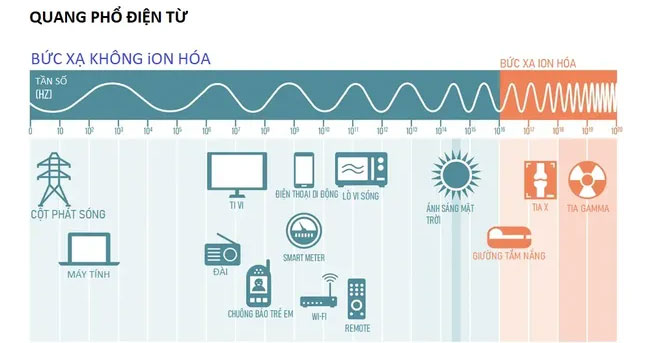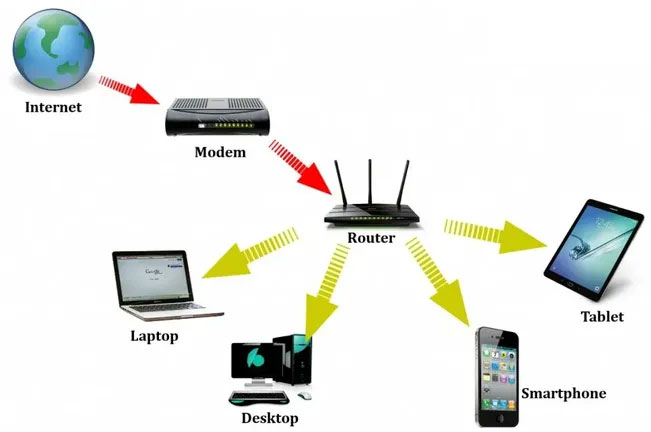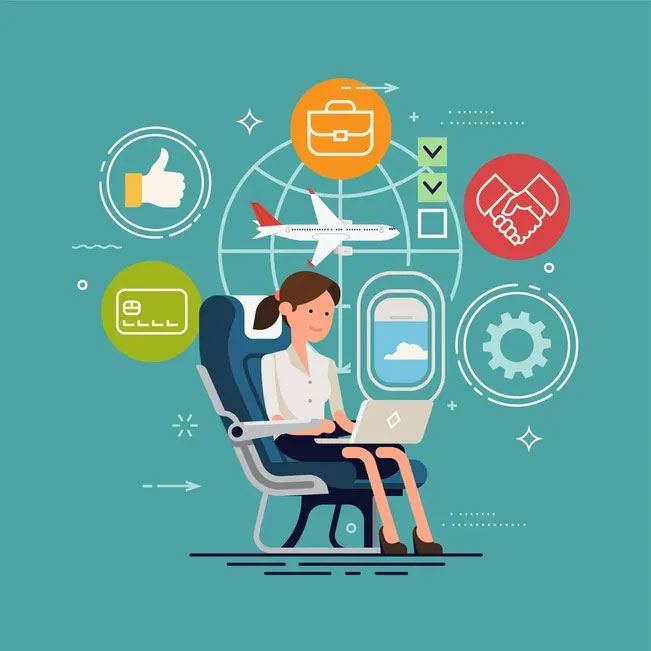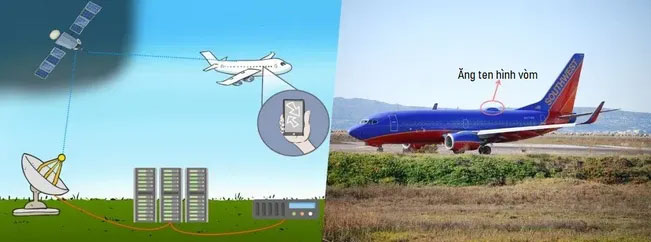Most of us have eaten potatoes and are aware of their nutritional benefits and uses in the paper and textile industries.
However, there is one surprising fact that few may know: potatoes also play a crucial role in connecting the global internet, specifically by improving Wi-Fi signals on airplanes. How can potatoes have such a remarkable effect?
How Does Wi-Fi Work?
Wi-Fi stands for “wireless fidelity”, which can be understood as “high-precision wireless technology.” As the name suggests, Wi-Fi is a type of technology that allows internet connectivity without wires or cables. Instead, information is transmitted from one device to another through radio waves of specific frequencies (measured in gigahertz).

Electromagnetic Spectrum.
To use Wi-Fi, we need the following devices:
- Internet connection.
- Modem.
- Router.
- Wireless devices (phones, computers, and other devices equipped with ‘wireless adapters’ that allow Wi-Fi signal reception)

Wi-Fi Network Diagram.
Imagine you really like a TikTok video and want to give it a heart. When you click the heart icon, within milliseconds, the adapter in your device forwards the data to the router, which sends it through the modem to the internet service provider, ultimately relaying that data to the TikTok server, and your heart will be registered.
How Does Wi-Fi Work on Airplanes?

Wi-Fi on Airplanes.
Airplanes receive radio signals through two types of waves: ground-based Wi-Fi and satellite Wi-Fi. The airplane has an antenna to receive the signals.
- Ground Wi-Fi: When the airplane is within the range of a cell tower, it receives signal waves from that tower and then switches to the nearest tower’s network when it completes its journey. However, this is only possible if the airplane is flying over land.
- Satellite Wi-Fi: When flying over vast oceans, the airplane uses Wi-Fi received as signals from satellites orbiting above.
Imagine you are at a party but suddenly need to send an important email to your boss. You plan to send it right away, but your phone has a weak connection, and there is no Wi-Fi available. Chances are, you would ask a friend to share their Wi-Fi from their phone and allow you to access their network.
Similarly to your friends’ phones, airplanes act as Wi-Fi hotspots for passengers’ devices.

How Airplanes Receive Wi-Fi Signals.
Why Are Potatoes Used to Test Wi-Fi on Airplanes?
Unlike Superman’s laser beam, radio waves cannot penetrate all types of materials. Depending on the object, they can be absorbed, reflected, or refracted. Wi-Fi signals are radio waves, so they are also absorbed by certain objects, weakening them. These ‘objects’ include humans!
An airplane typically has around 200 passengers seated in rows. To ensure that every passenger, including those seated in the back, receives Wi-Fi, engineers at Boeing – the oldest airline in America – conducted an experiment to help determine Wi-Fi strength at various locations on the airplane.
Instead of requiring hundreds of people to sit still for hours while collecting experimental data, they found that using sacks of potatoes would be more convenient.
The water content and chemical properties of 9 tons of potatoes absorb and reflect radio signals in a manner similar to a fully-loaded passenger airplane.
They chose potatoes over other fruits and vegetables because the dielectric constant of potatoes at a certain frequency matches that of humans. This was discovered by engineers after reviewing a research paper on the dielectric constants of 15 types of fruits and vegetables published in the Journal of Food Science.
It is evident that as science progresses and research becomes increasingly complex, there is still room for simple methods that yield optimal results.


















































